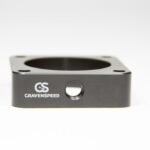The automotive landscape is replete with alphanumeric designations, often imbued with specific meanings that delineate a vehicle’s characteristics and intended purpose. BMW, the renowned Bavarian Motor Works, is no exception. Among its nomenclature, the “is” suffix stands out, signifying a particular breed of vehicle focused on enhanced performance and a sportier driving experience.
Essentially, “is” in BMW parlance translates to “injection sport” (often shortened to “sport injection” in some contexts). However, it’s crucial to note that the precise interpretation and application of “is” have evolved over BMW’s storied history. Initially, the designation explicitly denoted the presence of fuel injection technology coupled with a sporting character. But as fuel injection became ubiquitous, the “is” badge evolved to represent a sportier trim level within a given model line, often encompassing a suite of performance-oriented upgrades.
Let’s delve into the nuanced tapestry of what you can expect when encountering a BMW emblazoned with the “is” insignia.
1. Enhanced Powertrain Dynamics:
At the heart of any “is” model lies a carefully calibrated powertrain designed to deliver a more exhilarating driving experience. This could manifest as a higher-output engine compared to its non-“is” counterparts. Expect refinements to the engine management system, optimizing fuel delivery and ignition timing for enhanced throttle response and power delivery. The integration of performance-tuned exhaust systems, boasting reduced backpressure and a more sonorous exhaust note, is also a common hallmark.
2. Chassis and Suspension Augmentation:
Power is nothing without control. BMW “is” models invariably feature upgrades to the chassis and suspension systems, engineered to provide superior handling and cornering prowess. Stiffer springs, recalibrated dampers, and thicker anti-roll bars are typical components of this package. Expect a more planted feel, reduced body roll during cornering maneuvers, and heightened responsiveness to steering inputs. Some models may even incorporate electronically adjustable dampers, allowing the driver to tailor the suspension characteristics to their specific preferences and driving conditions.
3. Braking System Optimization:
Stopping power is paramount, and BMW “is” models often benefit from upgraded braking systems. Larger diameter brake rotors, coupled with multi-piston calipers, provide increased thermal capacity and improved braking performance. High-performance brake pads, engineered for enhanced friction and fade resistance, are also frequently employed. Expect shorter stopping distances, improved pedal feel, and enhanced braking confidence under demanding conditions.
4. Aerodynamic Refinements:
Aerodynamics play a crucial role in optimizing vehicle performance, particularly at higher speeds. BMW “is” models often feature subtle yet effective aerodynamic enhancements, such as a front splitter, rear spoiler, or rear diffuser. These components are designed to reduce lift, increase downforce, and improve overall aerodynamic efficiency. While the visual impact may be understated, these aerodynamic tweaks contribute to improved stability and handling at higher velocities.
5. Distinctive Styling Cues:
Beyond the mechanical upgrades, BMW “is” models typically incorporate distinctive styling cues that set them apart from their more pedestrian siblings. This could involve unique alloy wheel designs, sportier front and rear bumpers, and exclusive exterior trim elements. Inside the cabin, expect to find sport seats with enhanced bolstering, a sport steering wheel, and distinctive interior trim materials. These visual enhancements serve to reinforce the “is” model’s sporting character and provide a more engaging driving environment.
6. Transmission Tuning:
The transmission is a critical link in the powertrain chain, and BMW “is” models often feature transmission tuning optimized for performance. This could manifest as shorter gear ratios for quicker acceleration, or recalibrated shift algorithms in automatic transmissions for more aggressive shifting behavior. Manual transmissions may feature a shorter-throw shifter for enhanced precision and feel. The goal is to provide a more direct and engaging connection between the engine and the wheels.
7. Limited-Slip Differential (LSD):
In some instances, higher-performance “is” models may even be equipped with a limited-slip differential (LSD). An LSD helps to distribute torque more effectively to the wheels with the most traction, improving acceleration and handling, particularly on slippery surfaces or during aggressive cornering. This feature is particularly beneficial in rear-wheel-drive models, where it helps to mitigate wheelspin and maintain optimal traction.
In summation, the “is” designation on a BMW signifies a commitment to enhanced performance and a sportier driving experience. While the specific components and features may vary depending on the model and model year, the underlying principle remains consistent: to deliver a more exhilarating and engaging driving experience for the discerning enthusiast. Think of it as a carefully curated package of performance enhancements, designed to elevate the driving dynamics and visual appeal of a given BMW model.










Leave a Comment